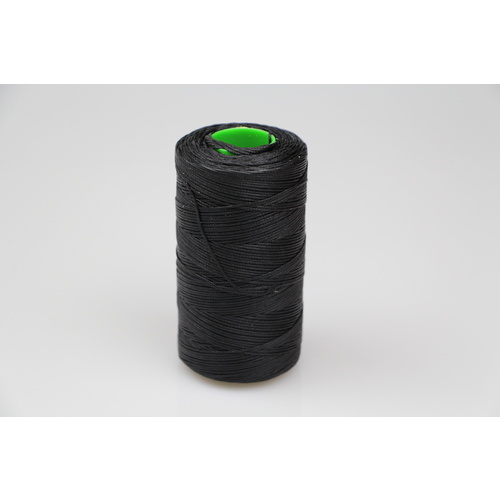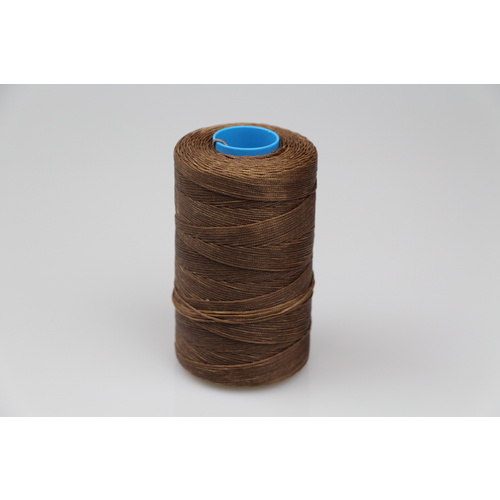SADDLERY SEWING THREAD
When it comes to saddlery, every detail matters—from the type of leather used to the smallest stitch that holds it all together. One of the most crucial elements in crafting durable and aesthetically pleasing saddles, bridles, and tack is the sewing thread. Saddlery sewing thread plays a pivotal role in ensuring the longevity and strength of leather goods, making it an indispensable component for saddlers, leatherworkers, and equestrians alike.
Why Quality Sewing Thread for Saddlery Matters
Saddlery undergoes immense strain and wear due to constant use and exposure to the elements. Whether it’s a saddle carrying a rider for hours or a bridle enduring the tug of a strong horse, the stitching must withstand tension, friction, and weather conditions. High-quality sewing thread for saddlery is designed to hold firm, ensuring that leatherwork remains intact even under extreme pressure.
Poor-quality thread can lead to premature failure, compromising not only the appearance but also the safety of saddlery. Weak stitches can unravel, causing discomfort for the horse and potential danger for the rider. This is why professional saddlers opt for premium saddlery sewing thread made from strong, durable materials.
Materials Used in Saddlery Sewing Thread
The material of the thread is as important as the leather it binds. Here are some of the most commonly used threads in saddlery:
1. Polyester Thread
Polyester is one of the most popular materials for saddlery sewing thread due to its strength, UV resistance, and ability to withstand harsh environmental conditions. Unlike cotton, polyester doesn’t rot when exposed to moisture, making it an excellent choice for outdoor saddlery.
2. Nylon Thread
Nylon is another strong synthetic material widely used in leatherwork. It provides excellent stretch and durability, which makes it ideal for areas of saddlery that experience heavy tension. However, it may degrade over time when exposed to prolonged sunlight, so UV-resistant coatings are often added.
3. Linen Thread
Traditional leatherworkers still appreciate linen thread for its natural look and ability to hold wax well. When coated with beeswax, linen thread gains additional strength and water resistance, making it a classic choice for hand-stitching saddlery.
Thread Thickness and Strength: Choosing the Right Fit
Selecting the correct thickness and strength of sewing thread for saddlery depends on the type of project at hand. Saddles and bridles require a thicker, heavier-duty thread, while finer leather goods like wallets or belts may use a lighter thread for a more refined finish.
Common thread sizes used in saddlery include:
- Heavy-duty (Size 277, 346, 415) – Ideal for saddles, harnesses, and high-stress applications.
- Medium-weight (Size 138, 207) – Suitable for bridles, belts, and heavy bags.
- Lightweight (Size 69, 92) – Used for fine leather goods where aesthetics are prioritised.
A well-chosen thread size ensures durability without overwhelming the leather’s visual appeal.
Hand-Stitching vs. Machine-Stitching in Saddlery
Saddlers use both hand-stitching and machine-stitching techniques, depending on the type of project and the finish required.
Hand-Stitching
Hand-stitched saddlery is often considered superior in strength and aesthetics. The traditional saddle stitch technique, using waxed thread and two needles, creates an interlocking stitch that holds even if one section wears out. This is why high-end saddlery items are still hand-stitched with precision and care.
Machine-Stitching
For production efficiency and consistency, industrial sewing machines are used in saddlery manufacturing. Specialised heavy-duty sewing machines handle thick leather and strong thread to produce uniform stitches. While machine-stitched saddlery is quicker to produce, it may not always offer the same level of durability as hand-stitched pieces.
Waxed vs. Unwaxed Thread: Which is Better for Saddlery?
Waxed saddlery sewing thread is preferred for hand-stitching due to its ability to grip the leather and resist moisture. The wax coating strengthens the thread, prevents fraying, and enhances its ability to glide through thick leather layers.
Unwaxed thread is more commonly used in machine-stitching, where the natural lubrication of synthetic threads provides smooth sewing without additional wax treatment.
Caring for Saddlery Stitching
To prolong the life of stitched saddlery, regular maintenance is essential:
- Keep leather clean and conditioned – Dry, cracked leather can put stress on stitching.
- Check for loose or frayed stitches – Addressing minor issues early prevents further damage.
- Store saddlery properly – Avoid prolonged exposure to direct sunlight and moisture.
- Use thread-friendly leather conditioners – Some conditioners contain chemicals that can weaken stitching over time.
Choosing the Best Saddlery Sewing Thread for Your Needs
When selecting sewing thread for saddlery, consider the following:
- Strength and durability – Ensure the thread can handle the demands of saddlery work.
- Resistance to UV, moisture, and wear – Outdoor saddlery requires robust, weather-resistant thread.
- Aesthetic appeal – The right colour and finish can enhance the overall look of your leatherwork.
Saddlery sewing thread is the unsung hero of high-quality leatherwork. Whether hand-stitched or machine-sewn, using the right sewing thread for saddlery ensures that saddles, bridles, and tack remain durable, reliable, and visually appealing. By choosing the right thread material, thickness, and stitching technique, saddlers can create masterpieces that stand the test of time and use. Investing in premium saddlery sewing thread is an investment in craftsmanship, safety, and lasting quality.
Sewing Threads at Vardhman A&E Threads
If you're looking for high-quality sewing threads for your denim projects, Vardhman A&E offers a premium selection. Whether you need bonden polyester or waxed braided thread, we provide reliable options to suit your needs.
Why Choose Vardhman A&E?
- High-quality materials – Threads designed for durability and professional results.
- Wide range of options – From polyester to waxed linen threads.
- Trusted by professionals – Used in industries like automotive, fashion, and saddlery.
When working with saddlery sewing, investing in the right sewing thread ensures your project stands the test of time. Visit Vardhman A&E to explore their range of sewing threads today!








